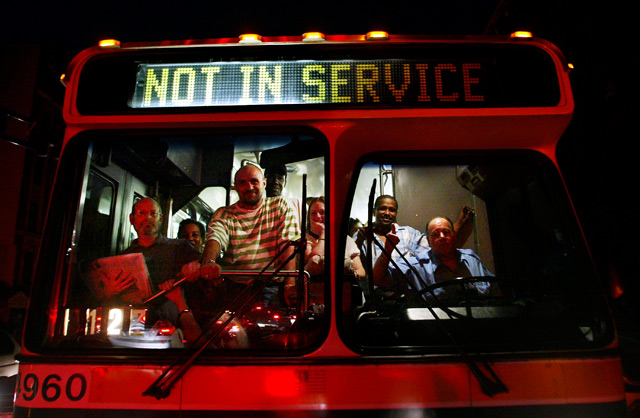Blackouts & Balloons
August 19, 2016
“Despite the difficulties or disasters it may have inflicted on thousands of French people, the flood of January 1955 was actually more of a celebration than a catastrophe.”
-Roland Barthes
On Sunday night, JFK shut down after an imagined shooting in Terminal 8 that was really just loud celebration of Usain Bolt’s spectacular 100-meter dash. Shut down is an understatement—the airport exploded into hysterical chaos that only calmed down without consequence because nothing had actually happened. David Wallace-Wells, having just arrived at the airport from Denmark with his wife, paints a scene worthy of a Junkspace Hieronymus Bosch: multiple converging stampedes, TSA agents fleeing and sobbing, the utter breakdown of authority and process.
While it lasted it was a nightmare.
To experience the JFK shooting scare or hear about it later was to glimpse how fragile the megasystems we use daily have become and wonder how much worse a real emergency might have turned out. If you indulge your paranoid side like I frequently do and imagine the various ways that modern civilization’s many interlocking support systems might get hacked, what happened at JFK on Sunday will worry you. That one wasn’t even intentional.
Exactly 13 years before Sunday night, to the day—August 14, 2003—New York was the focal point of a better-known system failure, the Northeast blackout, a night that anyone who lived in the city at the time (I didn’t) will tell you great stories about. Yes, a few people died, more suffered, plenty of property and merchandise was damaged, but for everyone else, the night of the blackout was less terrifying and more thrilling, a welcome break from patterns that have grown stale, like a snow day in school.
While it lasted it was a party.
The closest thing I’ve experienced was another partial blackout, after Hurricane Sandy in 2012, that lacked the same euphoria because the extreme weather kept the same people indoors who were driven outdoors in 2003. Nevertheless, after Sandy I wrote that the hurricane and blackout had deprogrammed parts of Manhattan that had become boring and controlled, restoring a wildness to the urban environment that was fun to see, if only for a few days.

Riding the bus during the 2003 blackout (source)
Why was the recent JFK incident, in which nothing happened, so strange and menacing, while the 2003 blackout, that did real damage and even killed a few people, such a joyous moment for so many more New Yorkers?
The difference is the environment where each happened. As witnessed over and over again, airports are highly controlled, optimized and engineered, anxious places. When an airport stops working, there’s nothing to do except worry, or even panic. The same is true of enclosed institutions of all kinds, from hospitals to schools, where nobody wants to be any longer than necessary (and which Foucault observed were born of the same control techniques as modern prisons). These environments amplify the worst aspects of human behavior when they don’t work, and suppress them when they do work.
Other environments—the kind where people actually want to be—amplify the best aspects of humanity. Much of New York City, or any functional urban environment, falls into this category. The lesson of the blackouts, in fact, was that (for many) New York became a more humane and less atomized place with the power turned off, the very opposite of what happens inside airports. An electricity-free city is not something anyone wants, but as Barthes observed about the 1955 floods in Paris, it engenders “a world that is more accessible, controllable with the same kind of delectation a child takes in arranging his toys, experimenting with them, enjoying them anew.”
If there’s a simple lesson here for cities or institutions in “peacetime,” it’s that we should design them not to fail as spectacularly as JFK did on Sunday night. The streets of New York City, whatever problems they have, exhibit remarkable antifragility during natural disasters, and that quality should be nurtured and extended elsewhere.
For a more complicated conclusion we can look to Donald Barthelme’s short story “The Balloon” (which you should go ahead and read): the narrator constructs a giant balloon between 14th Street and Central Park in Manhattan. For 22 days it looms over everyday life, inspiring diverse reactions, including this:
“There was a certain amount of initial argumentation about the ‘meaning’ of the balloon; this subsided, because we have learned not to insist on meanings, and they are rarely even looked for now, except in cases involving the simplest, safest phenomena. It was agreed that since the meaning of the balloon could never be known absolutely, extended discussion was pointless, or at least less purposeful than the activities of those who, for example, hung green and blue paper lanterns from the warm gray underside, in certain streets, or seized the occasion to write messages on the surface, announcing their availability for the performance of unnatural acts, or the availability of acquaintances.”
Breaks in the mundane, then, are simply when we revert to our most human, whatever that is.